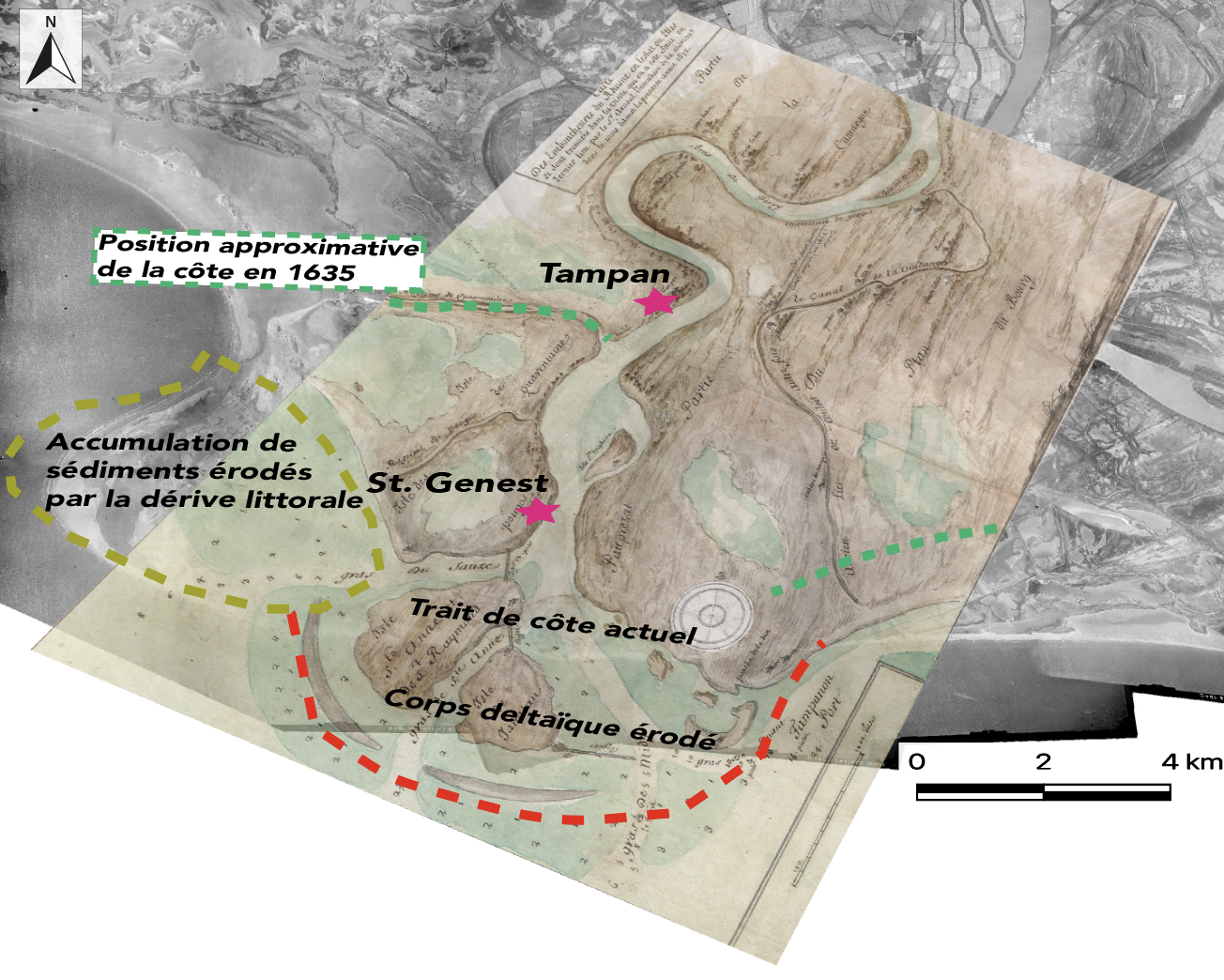Réponses Séciétales et morphologiques aux changements brutaux du PAG du Rhône dans son delta.
Sociological and morphological responses to the abrupt changes to the PAG of the Rhône in its delta.
2024
OHM Project
Rhone Valley OHM

Leader : Vella Claude
Project leader’s laboratory : UMR 7330
Full address of laboratory : CEREGE Technopole Environnement Arbois-Méditerranée BP 80 13545 Aix-en-Provence, cedex 04 – France
Keywords :
Dynamiques fluviales
Fluvial
littoral
delta du Rhône
avulsion
Moyen-Âge
histoire moderne
histoire contemporaine
géomorphologie
ouvrages
hydrauliques
prospections et inventaire
Disciplines :
Sciences de l'Univers
Sciences du système terrestre
Mobilité humaine, environnement et espace
Abstract :
Le delta du Rhône entre la fin du Moyen Âge et la période contemporaine connaît un rythme important d’avulsion. Précédemment le Rhône médiéval du Grand Passon avait subi une profonde évolution de son méandre terminal : « l’Escale de Labech » d’abord en extension puis en rotation anti-horaire jusqu’à l’avulsion complète du bras en 1587. Le rythme et l’évolution du méandre est en cours d’étude dans le cadre du doctorat d’Anna Kharlanova. L’avulsion crée alors un nouveau distributaire celui du Bras de Fer qui aura un destin assez court puisque à nouveau en 1711 une nouvelle avulsion génère le distributaire actuel du Grand Rhône via le canal des Launes. Malgré une chronologie d’avulsion bien établie, l’histoire des aménagements visant à maîtriser ou accompagner ces changements en lien étroit avec la péjoration climatique du Petit Âge de Glace et ses conséquences sur le fonctionnement hydro-sédimentaire sont moins bien connues. Du point de vue historique il est souvent complexe à partir des seuls documents techniques et cartographiques de distinguer ouvrages projetés et ouvrages réalisés. Il est impératif d’explorer méticuleusement les archives afin de décrypter les objectifs des ingénieurs, évaluer leur compréhension des dynamiques hydrologiques, leur anticipation des conséquences de l’aménagement, et apprécier la réalité des interactions Hommes/milieux que créent les ouvrages bâtis dans le lit du fleuve. Très peu de ces ouvrages ont été localisés, inventoriés, encore moins étudiés sur le terrain ou fait l’objet de sondages archéologiques. Enfin, il est bien souvent difficile de distinguer adaptation de la société à ces changements et résignations face aux changements brutaux c’est au prix de la compréhension de ces mécanismes que nous pourrons évaluer la possibilité de s’appuyer sur l’histoire pour accompagner le changement de paradigme auquel notre société contemporaine doit faire face via l’adaptation aux changements climatiques attendus.
Translated abstract :
The Rhône delta since the end of the Middle Ages to the contemporary period experiences a significant number of avulsions. Previously, the medieval Rhône of the Grand Passon underwent a profound evolution of its terminal meander: the "Escale de Labech" first in extension and then in counter-clockwise rotation until the complete avulsion of the arm in 1587. The rhythm and evolution of the Escale meander’s is currently being studied as part of Anna Kharlanova's PhD. The avulsion then created a new distributory, that of the Bras de Fer, which had a rather short destiny since again, in 1711, a new avulsion generated the current distributary of the Grand Rhône via the Canal des Launes. While the chronology of events is well knowned, the history of developments to combat or accompany these changes, closely linked to the climatic deterioration of the Little Ice Age and their consequences on hydro-sedimentary functioning, is less well known. From a historical point of view, it is often complex, on the basis of technical and cartographic documents alone, to distinguish between planned and completed works. It is necessary to delve into the archives through a detailed study of the texts to understand the objectives of the engineers, to assess their understanding of hydrological dynamics, their anticipation of the consequences of development, and appreciate the reality of the human/environmental interactions created by the structures built in the riverbed.
Very few of these structures have been located, inventoried, let alone studied in the field or sampled. Finally, it is often difficult to distinguish between society's adaptation to these changes and resignation in the face of sudden changes. It is at the cost of understanding these mechanisms that we will be able to assess the possibility of relying on history to accompany the paradigm shift that our contemporary society must face through adaptation to expected climate change.

